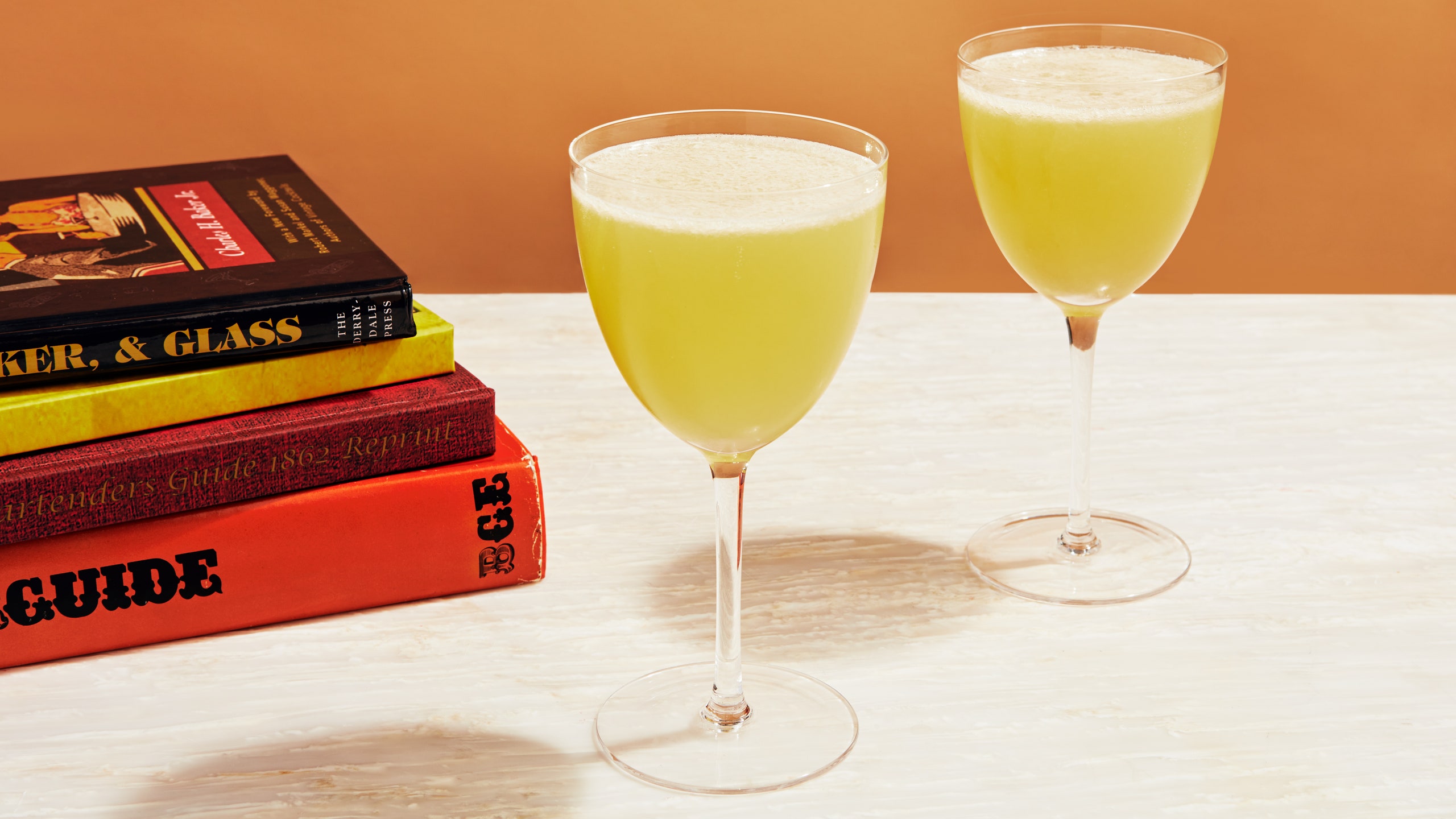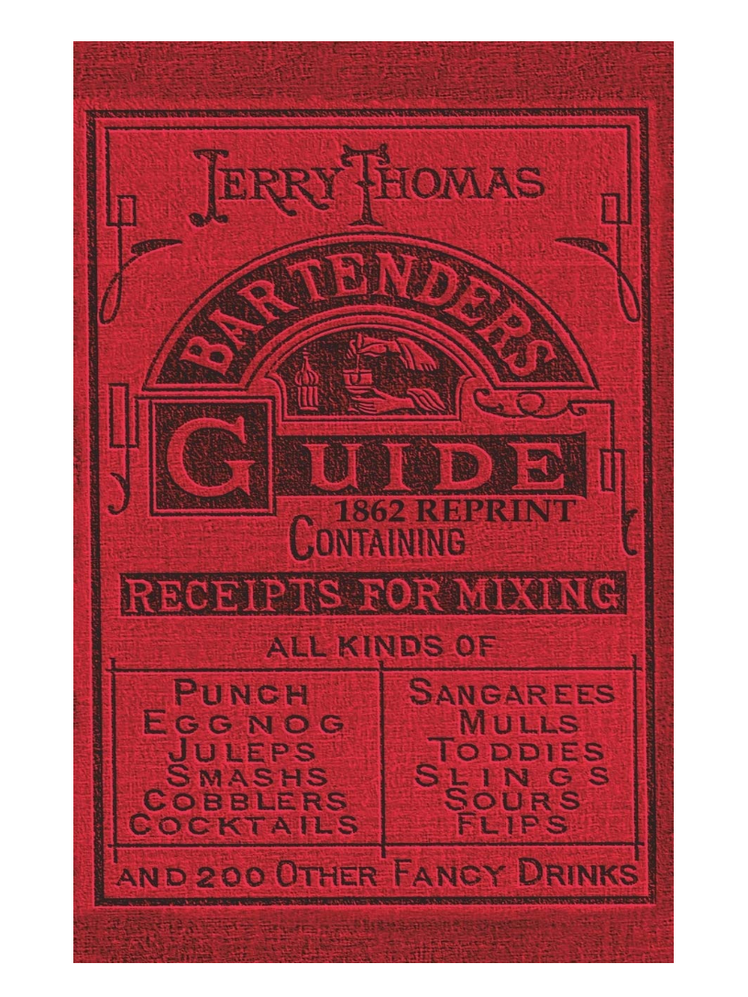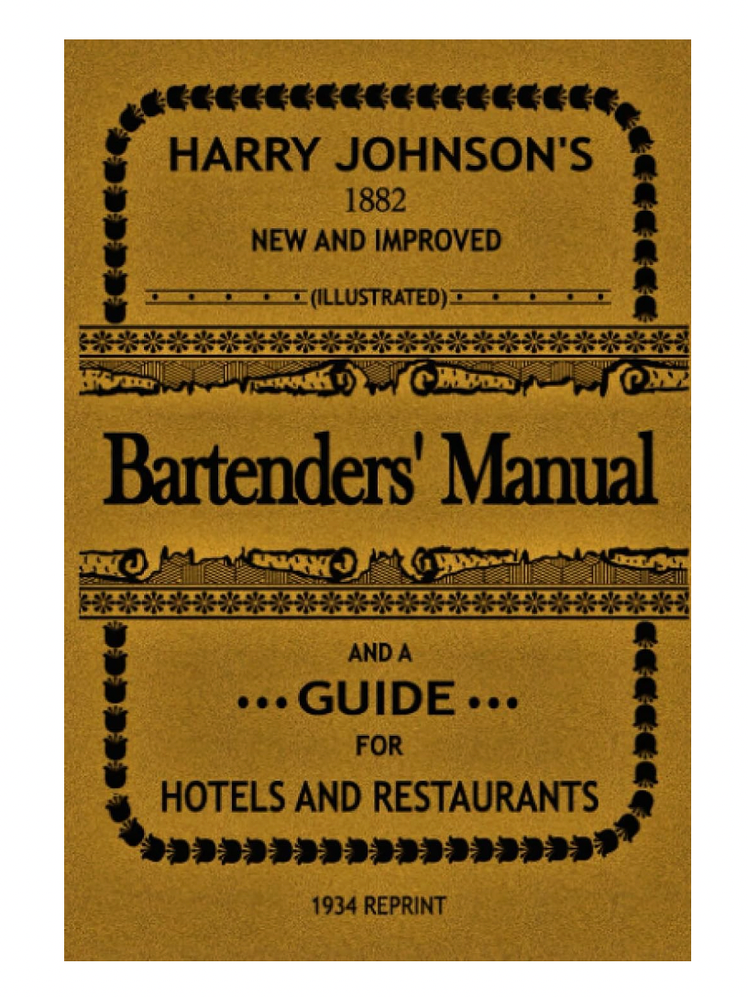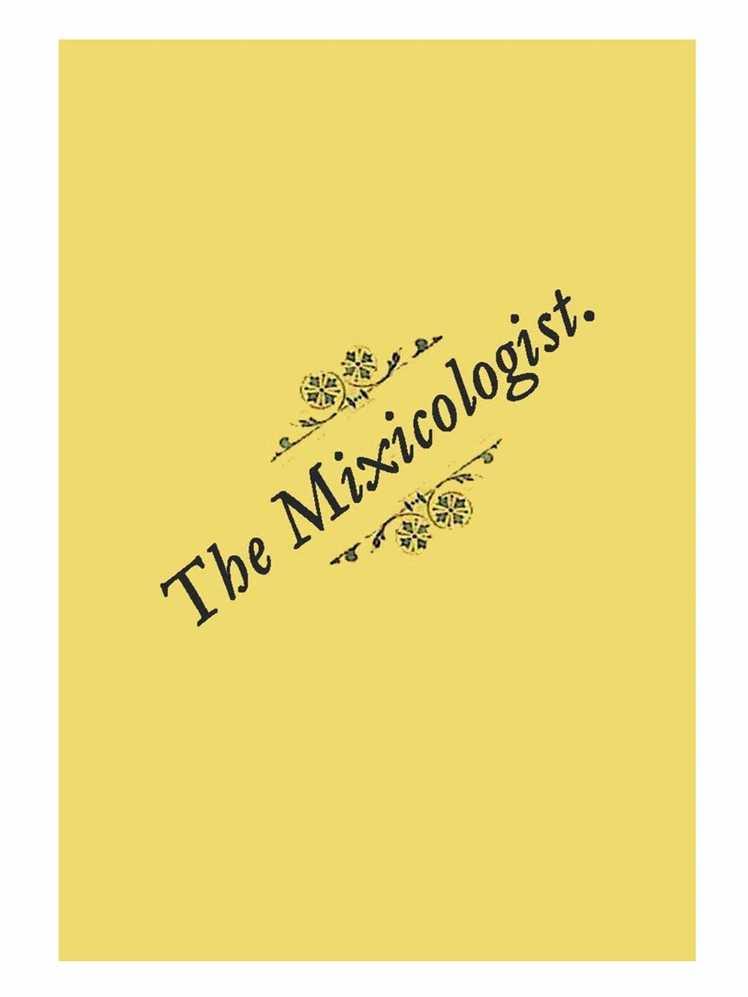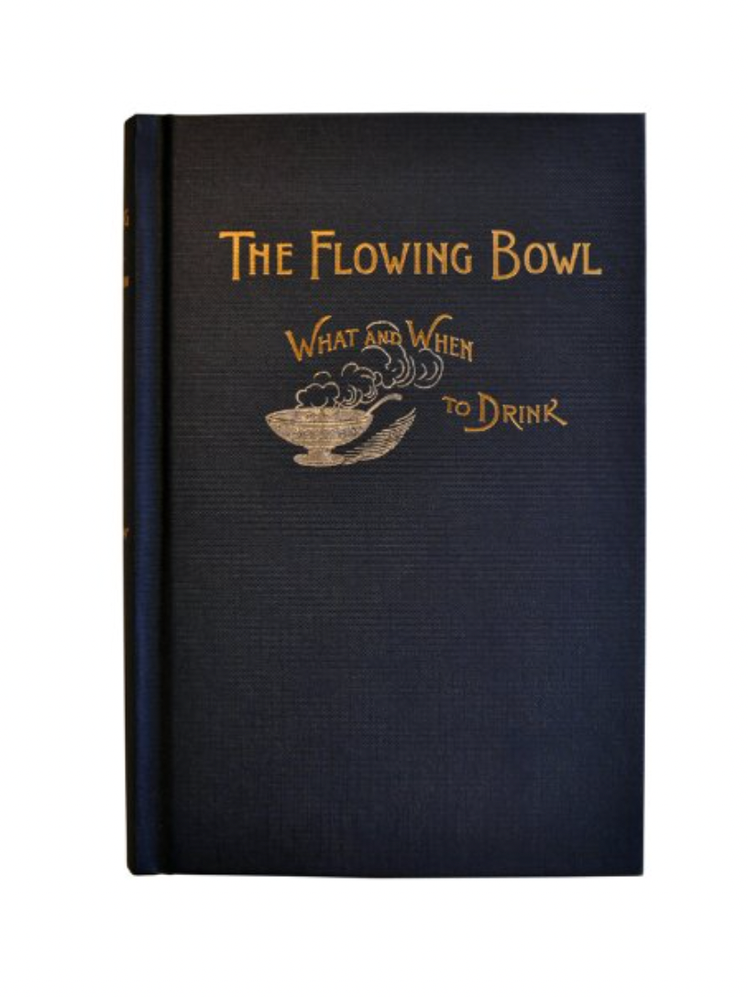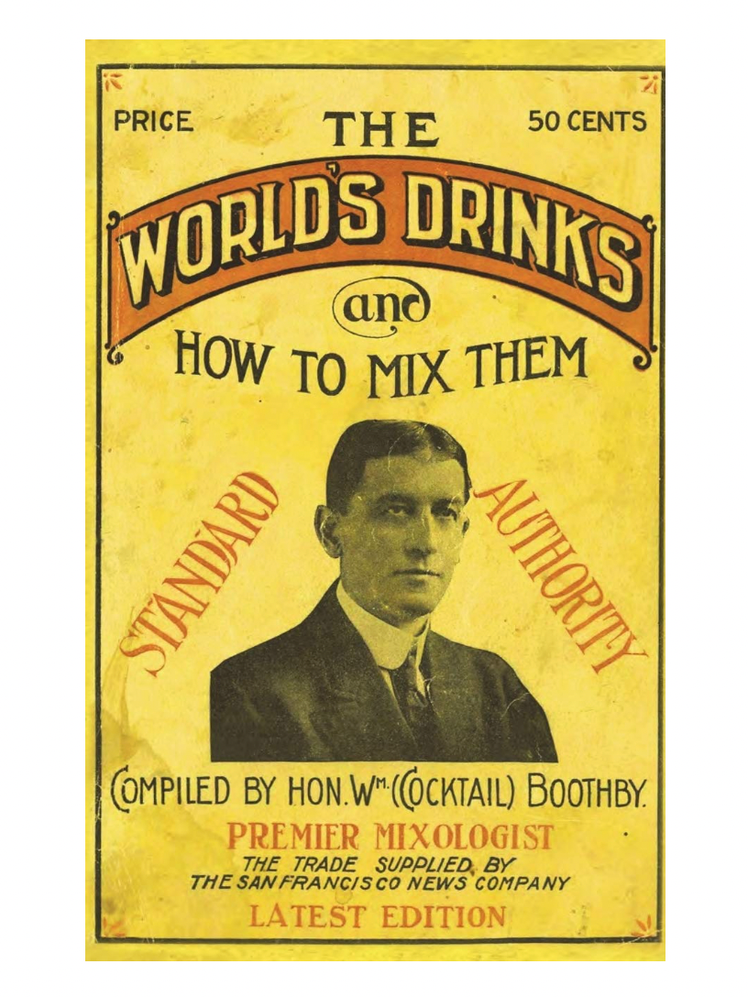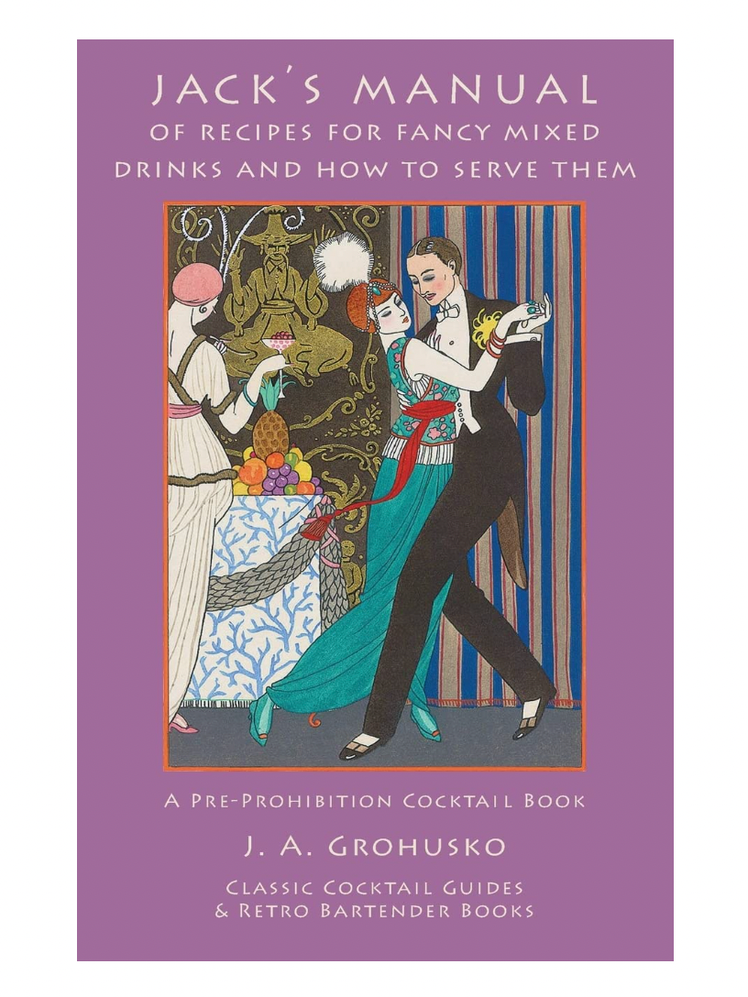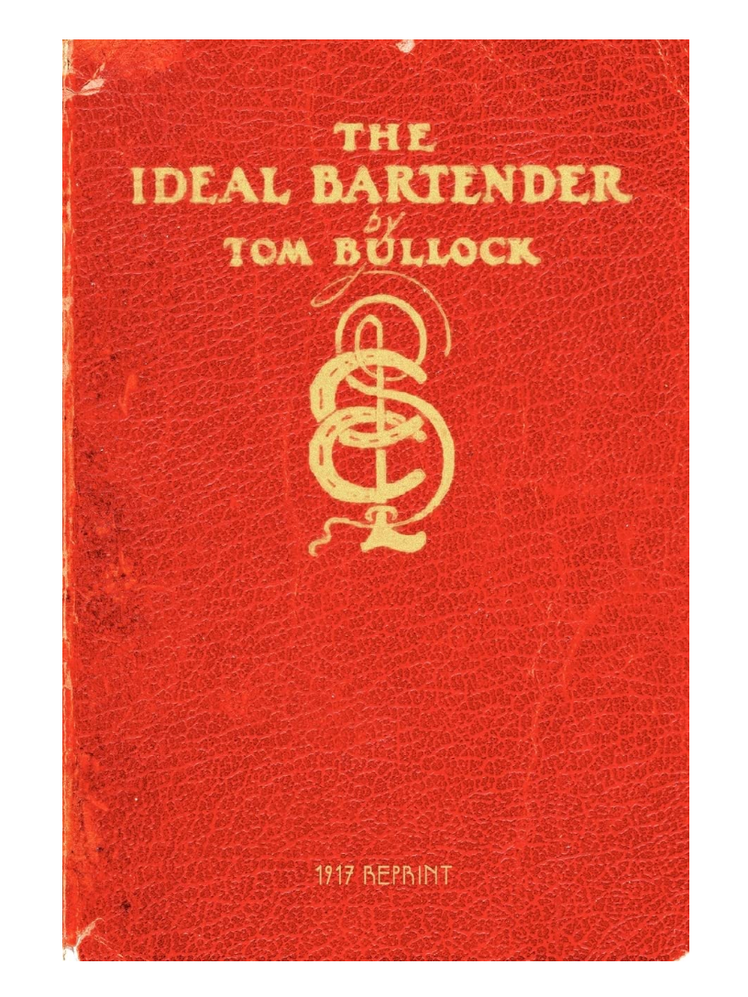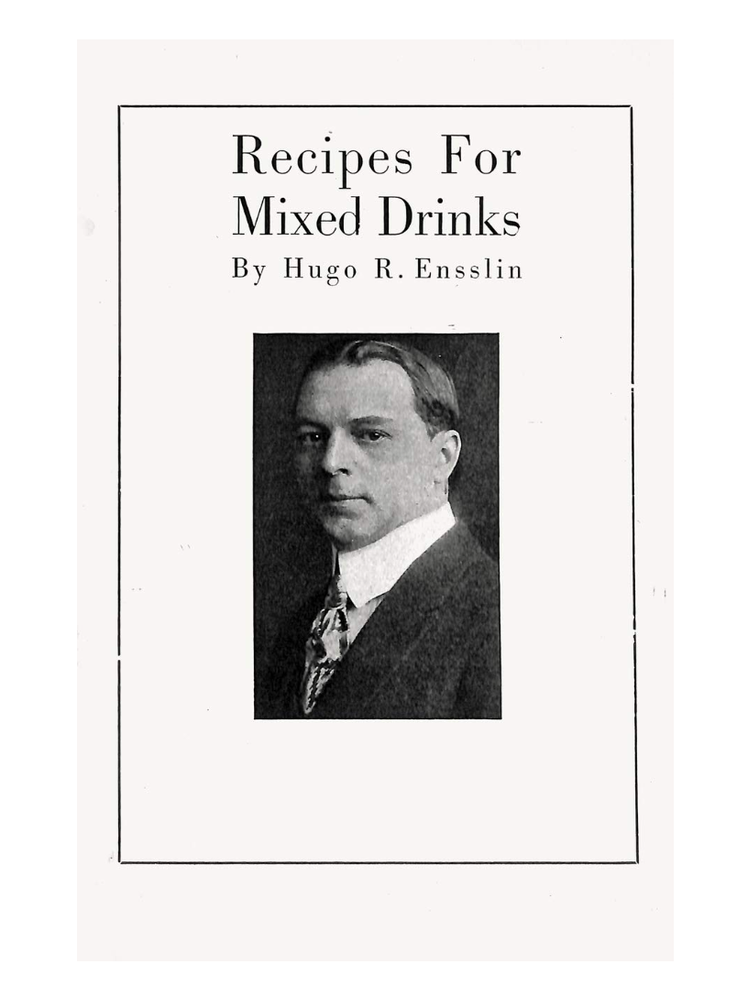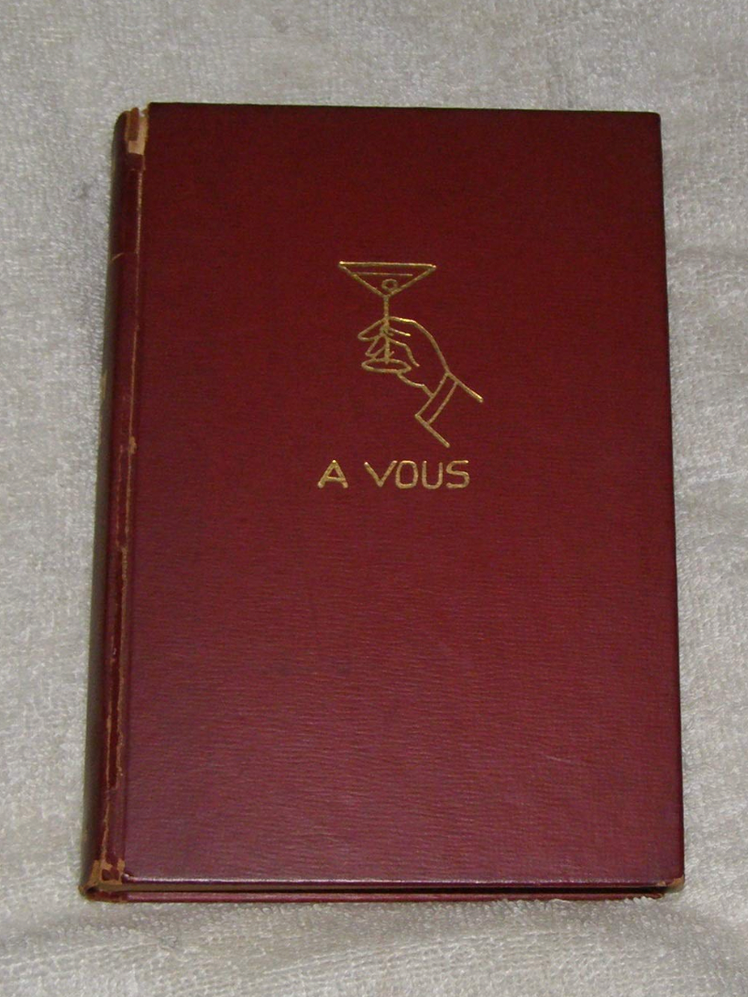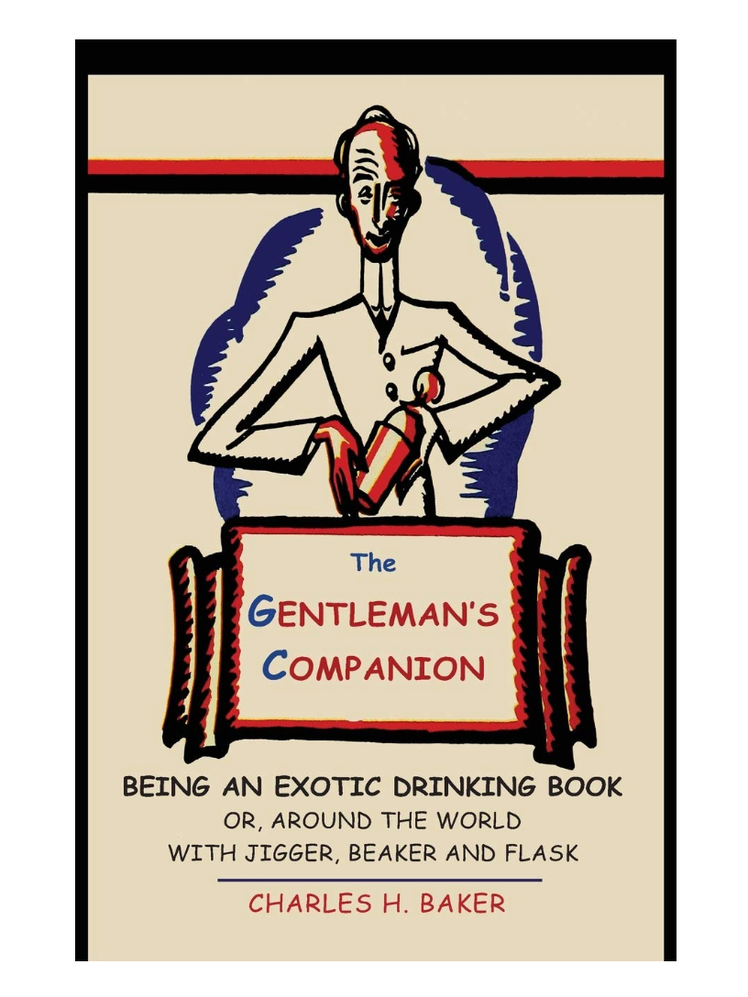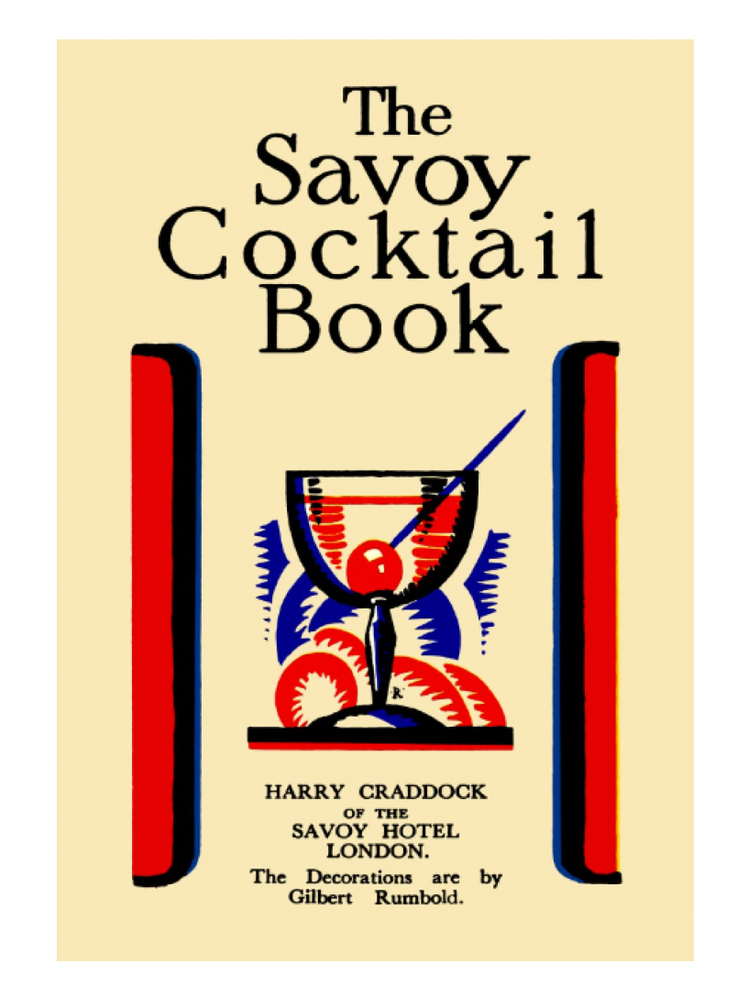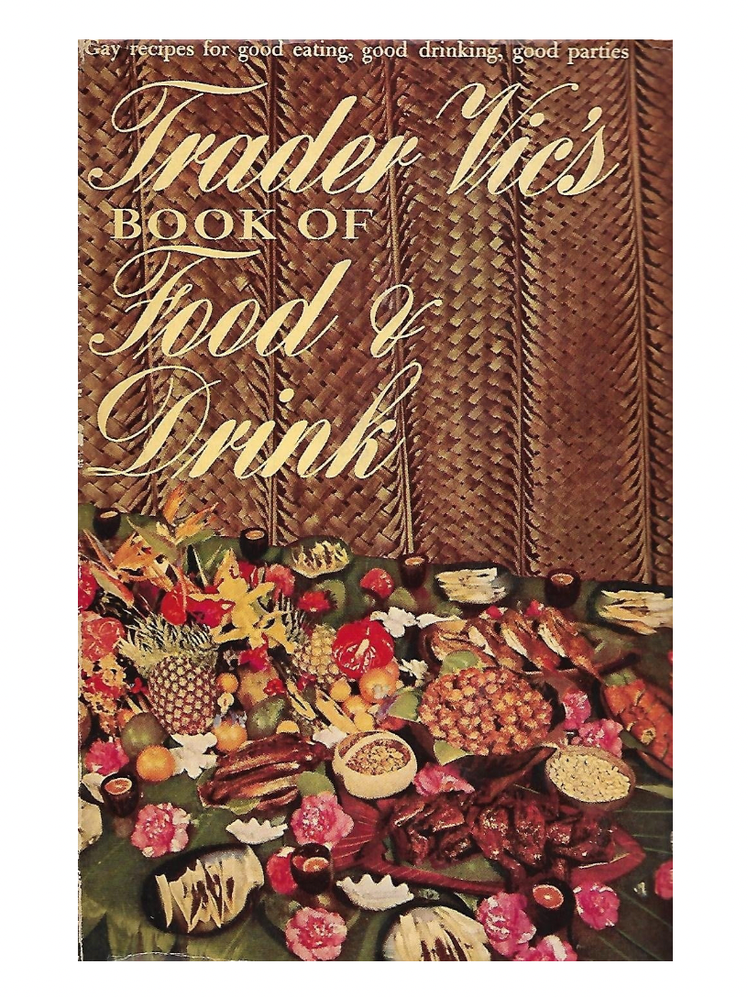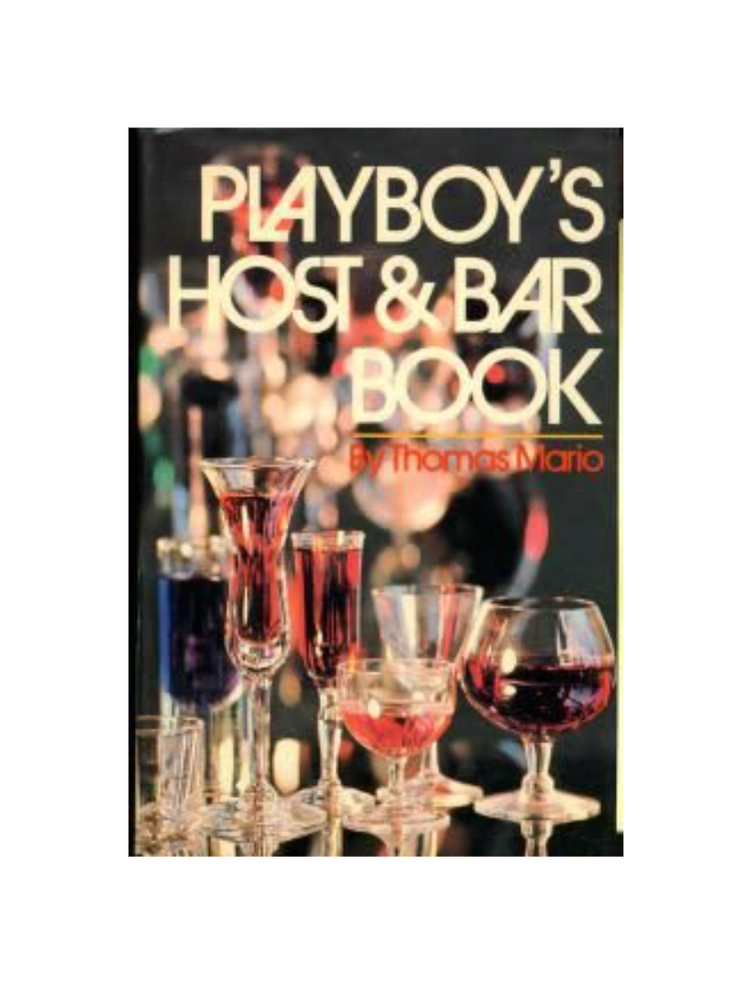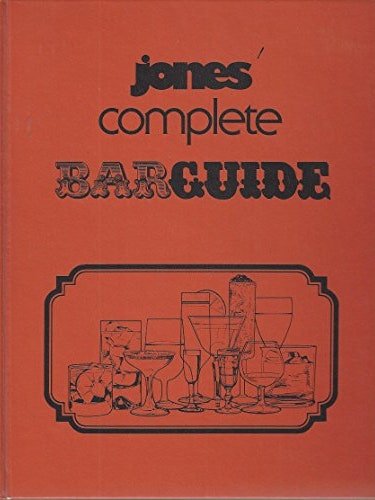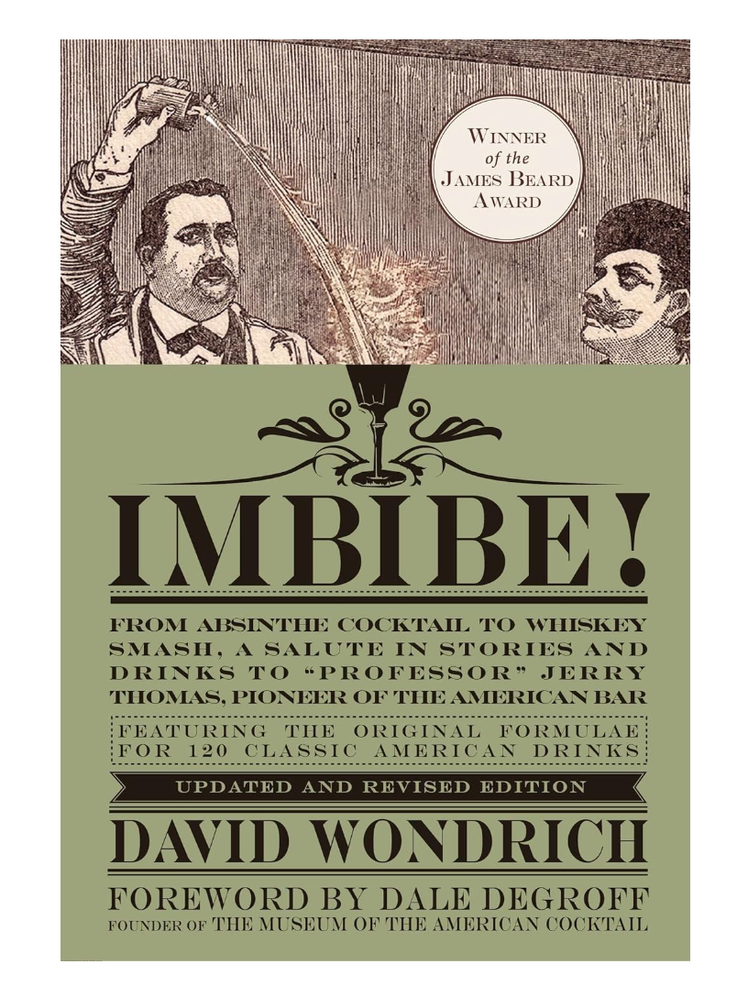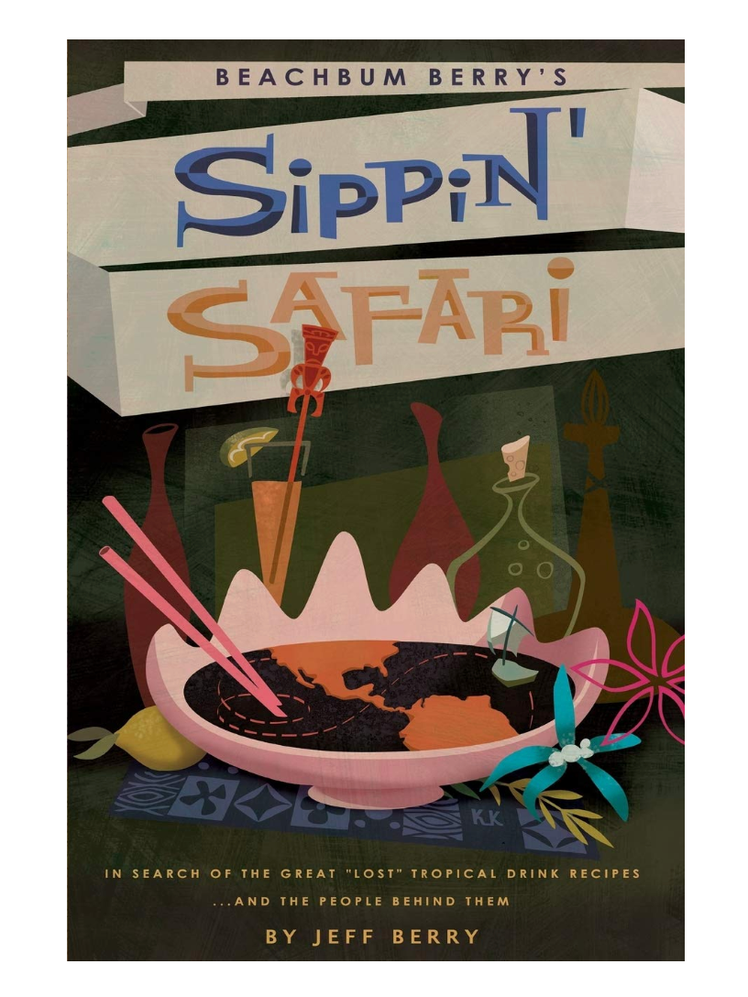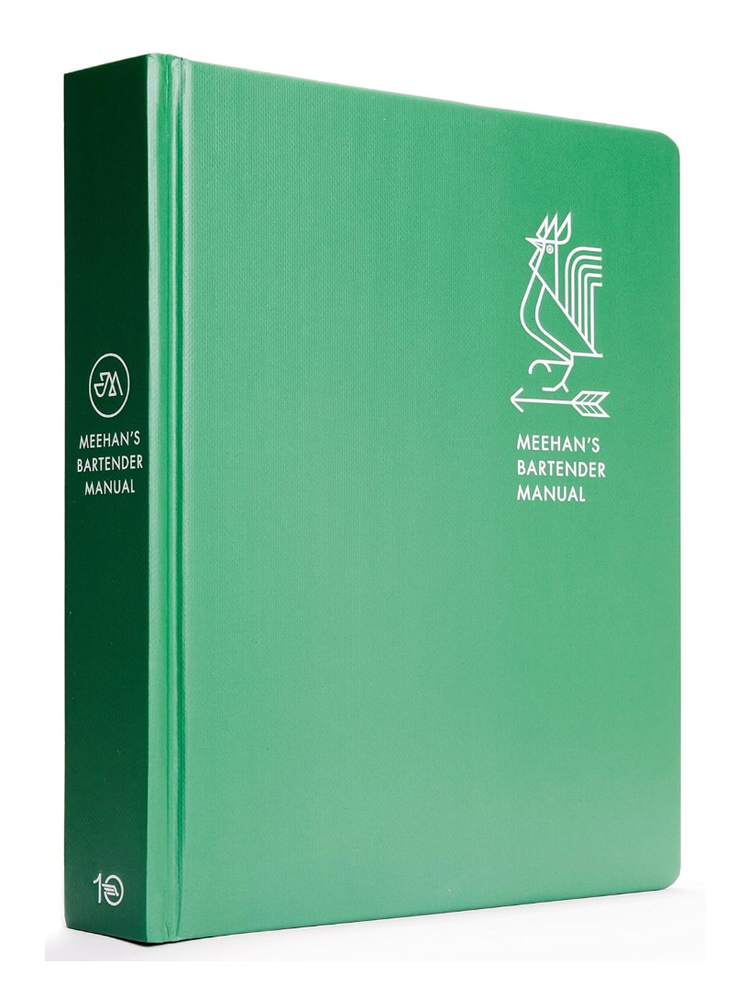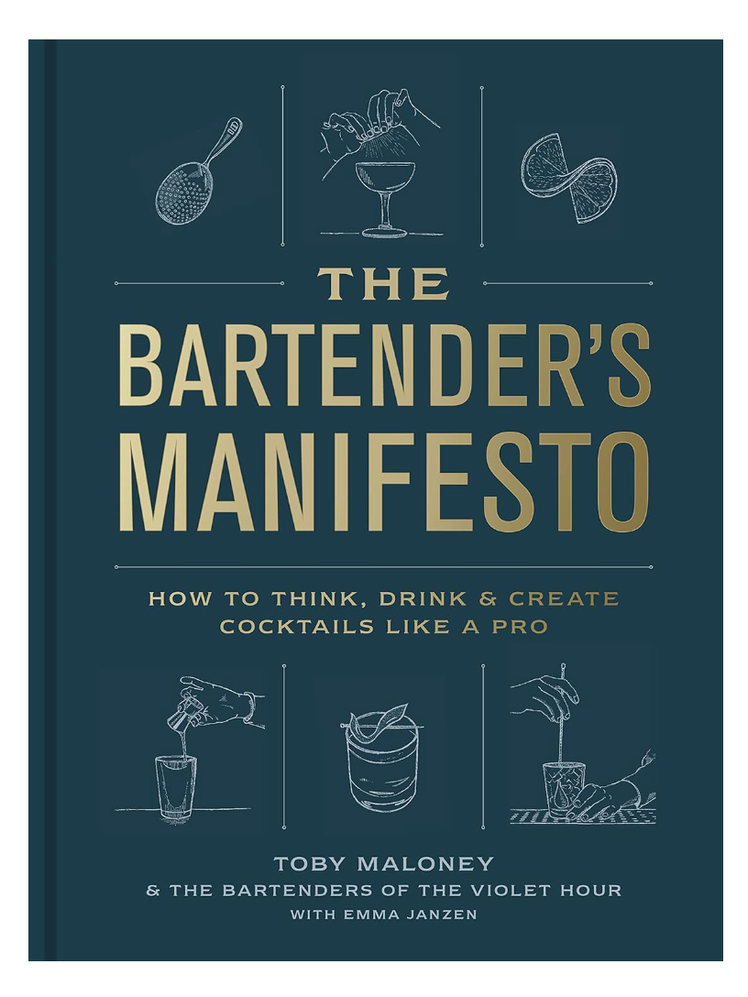All products featured on Epicurious are independently selected by our editors. However, when you buy something through our retail links, we may earn an affiliate commission.
Some of the bartenders who wrote history’s best cocktail books were bombastic and self-aggrandizing hustlers, while others were studious, humble craftspeople who presented themselves only so far as needed. And some folks who wrote great cocktail books weren’t bartenders at all. The books themselves are just as varied: some are austere collections of recipes that leave a lot to the imagination, while others are philosophical texts and painterly travelogs.
I’d argue that there’s no single essential cocktail book for anyone who’s really into drinks—each of these classics (and modern masterworks) represents a certain point of view in a certain place in time. These books cover a timespan of 160 years and are filled with characters (and drinks) who totally disagree with one another on any number of things—and yet almost every single one of these folks wants to teach you how to make a gin fizz. So which classic book should you buy if you’re looking to prep cocktails for a dinner party or trying to get a sense of drinking history? Which makes a memorable gift for the cocktail nerd in your life?
Scroll down for some of my favorite cocktail books, old and new. No matter your preferred style of drink or mixological skillset, you’ll find the correct book here to inspire your next cocktail.
Jerry Thomas, Bar-Tenders Guide
In the beginning, there was the Bar-Tenders Guide. Widely considered the prototype of the form, the 1862 cocktail book is the original American drinks recipe book, featuring such standards as eggnog, sherry cobbler, and the julep. The Bar-Tenders Guide was written by Jerry Thomas, the most famous bartender of the 19th century, depicted in its early pages adorned in a galaxy of diamonds and rolling his flaming Blue Blazer from one mug to another. The patron saint of the star mixologist, Thomas revised this book many times over the years. While latter versions (some posthumous and published without much involvement from “the Professor”) offer more comprehensive recipes, the punches, fizzes, and flips of the original edition give us a snapshot of history that has inspired bartenders for over a century. Though some of the drinks included here remain a little obscure today, it’s safe to say that this collection’s DNA can be found in every other book on this list of essential cocktail books.
Harry Johnson, New and Improved Bartender’s Manual
If Bar-Tenders Guide set the standard, Harry Johnson’s New and Improved Bartender’s Manual, published 20 years later, refined it. That’s the way Johnson advertised this book, at least, subtitling it How to Mix Drinks of the Present Style. Johnson was known to be a bit of a grandstander, as most startenders are—and Thomas was as well. According to the legends, the two had a dramatic rivalry, including a moment where Thomas rejected a bowl of the famous Tom and Jerry quite messily in Johnson’s New York bar.
Johnson was essentially the bar industry’s original consultant and his book features a lot of inside baseball that gives today’s reader a glimpse into bar culture in the 1880s, including his musings on how to train a young newbie and his opinions about the proper way to set the appearance of a barroom pre-shift. He lists a set of succinct rules that anyone serving drinks should observe, including the most important one of all: “When any party or parties call for any plain or mixed drinks whatever, it must be placed at first before him or them a glass of ice water, so that, if the customer desires to partake of some, he has an opportunity to do so, this rule must not be neglected under any circumstance whatever.” You’ll also find anachronistic versions of classics like the Manhattan cocktail.
C. F. Lawlor, The Mixicologist
In the first pages of this delightfully titled 1895 book, it’s suggested that the volume’s publication would garner its author immortality. But most of what we know about the Cincinnati bartender comes from this volume’s short introduction. Lawlor suggests that the “age of progress” he finds himself in is in need of a guide to “elevate the tone of our profession.” It’s a challenge Lawlor attempts “with feelings of modesty,” and he launches into a heartfelt consideration of what it means to be a bartender. “If to tend bar consisted only in filling up glasses thoughtlessly and pushing them out to customers carelessly,” he writes. “it would not be proper to speak of it as a polite vocation and a fine art, and it would be useless to write on the subject.”
But write he does. If Thomas and Johnson are the grandiose archetypes of the industry, Lawlor and his book represent a more modest and concise path. The Mixicologist begins with poetry, and in its way, that’s what fills its pages. His recipes aren’t adorned with unnecessary details or commentary, letting the drinks speak for themselves and setting a path of useful service for future bar book authors. The Mixicologist also introduces the Bijou—a sort of Martinez riff dressed up with the Christmas spice and charm of green Chartreuse—to polite society.
The Only William, The Flowing Bowl
Celebrity barkeep William Schmidt went by “The Only William” professionally, and perhaps that’s reason enough to add this book to your collection. The German-born bartender walked the walk in Chicago and New York, and even if his 1892 book had been uninspiring, it’s totally possible he’d have earned his nom de plume solely based on the majestic mustache and fierce gaze you’ll see on his faceplate at the beginning of the book. But the book is inspiring, and notable as one of the earliest attempts in a cocktail book to offer some thoughtful historical context. The Flowing Bowl traces a line from the ancient world to the standards of high society at the tail end of the 19th century. The book covers topics like tea, mineral water, and milk—and these sections feel scholarly, citing, for example, the work of 19th-century Scottish botanist Robert Fortune and the relatively new revelation that water was not an “element.” William even includes a short piece on “Physiology and Diet” where the barkeep makes some attempt at scientific speculation, including the suggestion that alongside food some substances are recommended to keep the “tissue and nerves” agreeable. These include spices, tobacco, opium, hash, cocaine, and of course, cocktails. The Only William! You’ll find recipes for obscure classics like The Opera and The Southern Cross here too.
William Boothby, The World’s Drinks and How to Mix Them
San Francisco barkeep William “Cocktail” Boothby wrote two important cocktail books. While the first, 1891’s American Bar-Tender, remains an interesting text, I’ve always been partial to his later volume, The World’s Drinks. The 1908 book was almost lost during the San Francisco earthquake, which supposedly destroyed its plates.
Luckily for us, this vast collection of recipes was later reprinted, capturing a unique spread of drinks including the first written recipe for both the Sazerac and the dry martini. Between the author’s two books, you can watch the latter cocktail evolve from an early version with sweet vermouth to the dry vermouth (plus orange bitters) version that would go on to become one of the most recognizable drinks in all of history.
J. A. Grohusko, Jack’s Manual of Recipes for Fancy Mixed Drinks and How to Serve Them
The photo of Jack Grohusko at the start of this 1908 book shows the sort of kind and thoughtful eyes one might expect of a working New York hospitality professional. In his introduction, the author asks us to not judge the work as a work of art, but an instruction manual. If one single cocktail recipe secures Jack’s Manual’s place on this list, it’s the inclusion of the Brooklyn cocktail, which some believe he created. This drink was the original neighborhood-named Manhattan riff and thus can be considered the spark of a trend that would extend for over a hundred years to come, including cocktails like the Greenpoint, the Carroll Gardens, and my own Kensington.
May E. Southworth, One Hundred and One Beverages
It’s a great shame of vintage cocktail books that we have so few published examples written by women. May E. Southworth’s 1904 collection One Hundred and One Beverages was one standout exception, part of a series that includes One Hundred and One Sandwiches (really) and One Hundred & One Ways of Serving Oysters. It’s an early example of a cocktail book that’s aimed at the home enthusiast and host, rather than the professional bartender, which makes sense as it was a book written by a prolific cookbook author.
One Hundred and One Beverages has chapters highlighting hot drinks, sherbets, punches, and fruit-based drinks, plus “mixed drinks” that appear nowhere else, like a Barbed Wire (made with Old Crow and cider), a “Wine Soup” (made with pearl tapioca, cinnamon, salt, red wine, and powdered sugar, served cold), and a Twentieth Century cocktail that predates the one that has survived as a classic. You’ll also find some more familiar cocktails, like a claret cup, and an unorthodox mint julep made with sweet vermouth and a sugar-frosted mint garnish. Collectible copies of One Hundred and One Beverages run $100 and up, but this one is also available for perusal online.
Tom Bullock, The Ideal Bartender
Pretty much every coworker or regular at my bar has heard me sing the praises of The Ideal Bartender. Tom Bullock’s 1917 book has had a huge influence on me professionally, and to my mind, it perfectly captures what may be the single most important period of American cocktail history, the teens. To everyone’s benefit, mixed drinks across the country had become their most codified, and it was the last decade before Prohibition screwed everything up. The Louisville and St. Louis-based bartender astutely captures this crucial era, and the book includes such classics as the Bizzy Izzy High Ball, one of my personal favorites and perennial recommendations. And for added weird factor, the classic 1917 recipe book’s introduction was written by banker George Herbert Walker, a big fan who sings the Kentucky-born bartender’s praises many years before his grandson and great-grandson would become American presidents.
Hugo R. Ensslin, Recipes For Mixed Drinks
The last American cocktail book published before Prohibition broke the long line of bartenders passing drinks back and forth, Recipes For Mixed Drinks sits alongside The Ideal Bartender in my mind. Like that book, Ensslin’s volume captures the period of most rigorously consistent bartending our country has ever seen, and the two books feature many of the same drinks and families of drinks. This New York City pro’s book also shows a fair share of new material, leaving the question as to whether some of it was original work or simply recipes the German-born bartender had learned along the way. What’s not in question is that this book has had a long-lasting effect; many later cocktail writers would borrow material from it. If you had a South Side Fizz or an Aviation in the early aughts, you have this book to thank. (You can check this one out online too.)
Crosby Gaige, Cocktail Guide and Ladies’ Companion
It’s thanks in part to the scholars and appreciators of cocktail culture that any of the old magic was carried on for future generations. Crosby Gaige was a theater impresario and part time food and beverage writer, whose work you can still find in the archives of the Atlantic. He published two cocktail books in his lifetime, Cocktail Guide and Ladies’ Companion and The Standard Cocktail Guide, both of which saw many reprintings and changes after their original publication in 1941 and 1944 respectively. Cocktail Guide and Ladies’ Companion offers gorgeous illustrations by Rea Irvin, “interviews” with supposed guests including “Jimmy Beard” (I’m not entirely clear if this is a joke or not) and occasional cocktail bangers like the Pink Lady and “Psychopathia Sexualis” (gin, sherry, two vermouths, and orange bitters.) The oldest versions of these books go for a pretty penny and don’t offer a ton of new drinks, but you’ll find the sort of odd obscurity like renaming the Jack Rose the “John Rose, Esq.” Both books offer insight into the post-Prohibition period and the first wave of thoughtful amateur historians looking to preserve and reclaim drinks like the Manhattan and daiquiri.
Charles H. Baker, Jr., The Gentleman's Companion: Volume II Being an Exotic Drinking Book or, Around the World With Jigger, Beaker and Flask
While the first volume of Charles H. Baker, Jr.’s 1939 Gentleman's Companion is a diatribe on world cuisines inspired by the food writer and raconteur’s travels, the second and more famous volume was devoted to the boozier side of gastronomy. The book was reprinted in the ’40s with its epic subtitle properly in the spotlight (the counterpart to volume one’s Knife, Fork & Spoon) and that version remains in heavy rotation on many a bar nerd’s bookshelves. Partly that’s because Baker remains fun to read—his prose is famously purple and as unrepentant as its writer, and the wealthy professional traveler of the 20th century conjures a rakish figure. He offers dubious history, denounces some drams while glorifying others with a zany aplomb that either lands for you or doesn’t. This one’s a wordy one but among the recipes he’d snagged from others along his travels, Baker delivers us the Angostura Fizz—and for that we are grateful.
Harry Craddock, The Savoy Cocktail Book
Of all the books on this list, it could be argued that none were more influential on American bartenders during the Cocktail Renaissance of the 21st century than The Savoy Cocktail Book of 1930. Harry Craddock trained for a time in the States before Prohibition forced the bartender’s return to his native Britain, where for a decade before the book’s publication he worked at the Savoy Hotel’s famous American Bar. He took over the position of head bartender from the famous Ada Coleman in 1925, and this book represents a collection of recipes from both of their tenures, including Coleman’s Hanky Panky and Craddock’s own White Lady. The book also introduced many older drinks from more obscure American cocktail books, including versions of the Aviation (without crème de violette) and the South Side, to a generation of bartenders.
While many old books have drifted in and out of print and become quite expensive to collect, this iconic little hardcover has remained accessible and available and thus had a lasting influence on bartenders both in the UK and the US. And as the American Bar at the Savoy, which opened over one hundred and thirty years ago and remains open today, this book represents a long-lived bar culture unlike any other book on this list—and one its author likely couldn’t have imagined.
Trader Vic, Trader Vic’s Book of Food & Drink
Bar culture in the United States was changing by midcentury. While writers like Crosby Gaige and Charles H. Baker, Jr. were reconstructing the pre-Prohibition cocktail canon one obscure old-school drink at a time, a new scene of tropical-themed bars emerged. The stars of this movement had names like Donn the Beachcomber and Trader Vic, and presented themselves as adventurers peddling exotica. They loved blending multiple rums in a single drink, one-upping each other, and appropriating Polynesian culture in equal measure. Victor Bergeron would publish other books under the name of Trader Vic (and the style’s originator, Donn Beach, would too), but his 1946 Book of Food & Drink was the one that brought the Zombie, the Dr. Funk, and the now-ubiquitous mojito to the masses. If tiki is your thing, this is the place to start.
Thomas Mario, Playboy’s Host & Bar Book
The 1970s get a bad rap. It was the time of disco drinks and fern bars filled with Tiffany lamps, 1000+-calorie drinks and the aforementioned ferns, sure, but it was also an era of encyclopedic bar books that could be used to stop open the bar fridge if needed. This 1971 compendium collects 800 drinks and information presented in the magazine as far back as 20 years earlier when the author became Playboy’s food and drink editor, and so it holds an interesting vantage point in history. You’ll find the Moscow Mule, Bloody Mary, and Frozen Pineapple Daiquiri you might be expecting, but you’ll also see recipes for a Bourbon Daisy, Rum Old-Fashioned, and Morning Glory Fizz.
The cherry on the top here: the idiosyncratic and weirdly specific essays on hosting parties at home that were typical of Playboy during those years. Grab this book to learn how to throw an “Intimate Sundown Party,” an “Indoor Picnic,” and a “Progressive Dinner Party.” I’ve read the last one at least three times. I’m still thoroughly confused and I love it.
Stan Jones, Jones’ Complete Barguide
Self-published in 1977, this iconic orange tome contains more than 4,000 recipes (yes! 4,000!), cobbled together from every bar book, pamphlet, and magazine article the Los Angeles bartender, writer, and consultant could get his hands on. There are multiple versions of many drinks, including five different recipes for the White Lady. And where the Playboy bar book dives into spirit categories and essays on hosting, Jones takes it upon himself to try and break down the entire contents of a potential back bar, how each spirit was made, and the history of many notable brands.
Jones’ Complete Barguide is, in my mind, the granddaddy of bar books, and the fact that it came crashing out of the ’70s—the supposed dark ages of American mixology—makes it all the more marvelous. This book had a marked influence on some notable bartenders of the current century, including Jim Meehan of PDT and Guiseppe González during his time at Clover Club in Brooklyn.
Gary Regan, The Joy of Mixology
The Joy of Mixology was one of the first cocktail manuals I owned, and it holds a special place in the hearts of many professional bartenders. The specs were pretty old-school by today’s standards, entrenched as it was in Gary Regan’s experience bartending from the the ’70s to the ’90s, but more than half of this hearty little volume is filled with advice on the life of professional bartending, ranging from essential instruction on how to rim a glass to very specific strategies like wearing a wedding band “at all times” to prevent unwanted advances. You’ll find a seasoned pro’s lessons on what to do with a bad tipper, how to arrange bottles on the bar, and a dope chart of liquor and liqueur density for layering your pousse-cafés.
Sure, some of this stuff is outdated, just like elements of every vintage cocktail book I’ve mentioned so far, but the classics never go out of style.
David Wondrich, Imbibe!
Historian David Wondrich is something of a hero of mine; he has helped me out on several Quixotic quests to decode bar history over the years. He’s written a lot of really cool books (I particularly recommend his Oxford Companion to Spirits & Cocktails) but Imbibe! is the one that started it all, and certainly the one I’d recommend to anyone starting a cocktail book library.
Ostensibly a deep dive into the life and work of Jerry Thomas, Imbibe! is more like the official primer to the 19th-century style of bartending and its immediate influence in the silver age before Prohibition (and even a little after). The book’s emphasis is on narrative and context, and for that it’s a true unicorn. While I’d often recommend getting the first edition of many cocktail books, the one you want here is Wondrich’s revised version, which is even better than the original.
Jeff Berry, Beachbum Berry’s Sippin’ Safari
In 1998, Jeff Berry’s Beachbum Berry’s Grog Log was widely influential in galvanizing the new throwback “tiki” movement, but I’ve run into Sippin’ Safari time and time again tending bars.
Many a coworker with a penchant for Hawaiian print has waved this book with aggressive enthusiasm over the years, and I’ve certainly stolen my share of tricks from its pages (you’ll find a lot of split bases in my drinks, it’s true). Much of Berry’s schtick is research into the lost recipes of yore, and this one goes deep, including, among others, the alleged original Zombie recipe—something of a Holy Grail at the time among tiki fanatics.
Sasha Petraske (with Georgette Moger-Petraske), Regarding Cocktails
Published a year after the much-beloved cocktail impresario passed away, Regarding Cocktails is a pretty and understated tribute to some of the cocktails found at Petraske’s bars, the most famous of which was New York’s legendary Milk & Honey. This book doesn’t attempt to be comprehensive, featuring instead a smattering of classics and a lot of originals (both popular and obscure) from bartenders who worked alongside him. Milk & Honey looms large in the text, much of which is written by an impressive set of guests including historian David Wondrich and famed bartender Dale DeGroff. This book is not a detailed history, but rather, a keepsake that focuses on bringing these wonderful drinks and the idiosyncratic style of its author and subject to your home.
Jim Meehan, Meehan’s Bartender Manual
There are a lot of exceptional bartender-authors in this list, and the best of them bring their wit and charm and unique perspective to their writing. World-famous bartender Jim Meehan, formerly of New York’s PDT and Gramercy Tavern, has written a book that is acutely thoughtful, a rarity even among so many articulate greats. “Misappropriating history by reenacting instead of interpreting it recently led bartenders to grow handlebar moustaches and dress like cast members of Boardwalk Empire,” he writes, sprinkling insights throughout pages filled with history, much-needed context, and the obligatory recipes. You’ll find essays on bar design, bar tools (for home and a professional setting) and thoughtful consideration of topics like when using commercially-produced syrups and infusions is the right choice. This one’s not to be missed.
Alex Day, Nick Fauchald, David Kaplan, Cocktail Codex
This book is among the first cocktail books I always recommend to new bartenders, which is probably not a surprise since I’ve worked for Day several times in my career and I consider him a mentor in practical theory. Certainly, my bar style personally wouldn’t be the same without his influence.
In Cocktail Codex, he’s still pointing the way and helping the reader parse the general zeitgeist of professional bartending in the 21st century. This book spends much time covering cocktail technique both basic and advanced in a clear and mindful way, while pushing its design into beautiful coffee table book territory. This book will not only explain what a sour is and how different sours are related, but it also attempts to teach you how to think about sours. And for that it is invaluable.
Toby Maloney with the bartenders of The Violet Hour and Emma Janzen, The Bartender’s Manifesto
This 2022 release from Toby Maloney of Chicago’s Violet Hour attempts to tackle some of the more complex and often nebulous concerns of the mixologist. This book will inspire the young professional or anyone who loves to hear a passionate advocate’s opinions. But it’s also full of delicious drinks that’ll change up your cocktail routine at home.

